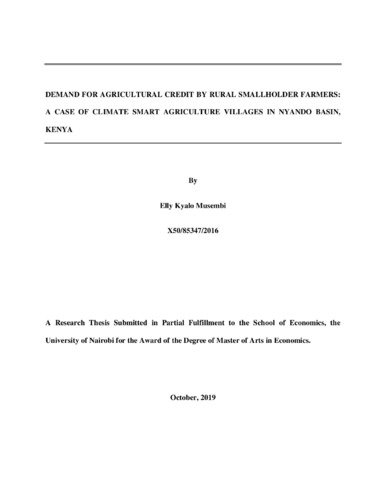Demand for agricultural credit by rural smallholder farmers: A case of climate smart agriculture villages in Nyando Basin, Kenya
Abstract
The effect of climate change and variability on agricultural production systems cannot be underestimated especially in rural areas. Farmers more than often experience increased agricultural losses and reduced productivity due to weather vagaries, little or no investment in their farms etc. Rural smallholder farmers are most affected and are faced with a number of challenges such as lack of insurance services, limited access to credit facilities especially from formal sources, among many others problems as they try to adapt and mitigate the impact of changing climatic conditions and effects of global warming. With the absence of insurance and limited access to financial resources (agricultural credit) the ability of the farmers to adopt smart farming technologies that can cushion them from such losses is threatened. In order to inform policy a lot of research work has been done on agricultural credit but resulted to inconsistent findings and conclusions in different regions. With such in mind, more research is needed on credit market participation, the intensity of participation and the choice of credit market more so in specific regions of the developing countries. The findings of these studies will augment the already existing knowledge and policies that actually reflect the needs of those particular communities for rural sustainable development in general and agriculture in particular. This research paper assessed loan facilities demanded by smallholder farmers‟, factors affecting borrowing decisions and the subsequent factors that influence the intensity of borrowing by these farmers in climate-smart villages of Nyando, Kisumu in an attempt to finance agricultural production and adopt smart farming practices. By use of stratified sampling a 120 households were sampled from participating and non-participating households. Data on individual, institutional and socioeconomic characteristics was collected from these farm households by university of Nairobi masters students in conjunction with CCAFS using structured questionnaire. Data analysis employed descriptive and quantitative methods using double hurdle model. The findings show that loan repayment period, number of groups household members are into and collateral influence positively the household decision to borrow with the intensity of participation being positively and significantly influenced by loan repayment period and household wealth endowment. Therefore groups should be used to finance farmers and unlock their economic potential.

